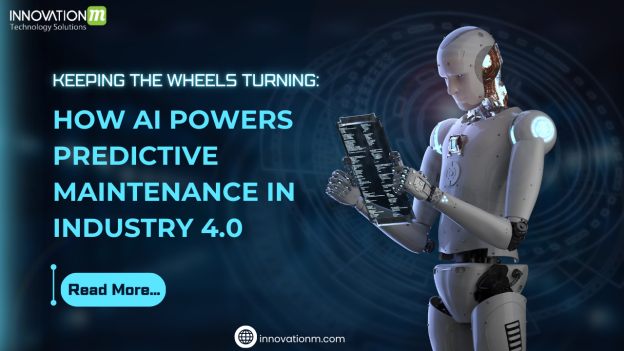Hey there, fellow tech enthusiasts! Today, let’s dive into the fascinating world of Industry 4.0 and how artificial intelligence (AI) is revolutionizing the way we maintain machinery. Picture this: you’re in a bustling factory, surrounded by the hum of machines, each one vital to the production process. But what if I told you that AI can predict when these machines might fail before it even happens? That’s the magic of predictive maintenance in Industry 4.0, and we’re about to explore how it works and why it matters.
Imagine you’re a technician at a manufacturing plant, responsible for ensuring that everything runs smoothly. In the past, you might have relied on scheduled maintenance or waited until a machine broke down to fix it. But with AI on your side, you’re equipped with a powerful tool that can anticipate issues before they escalate into costly downtime.
So, how does AI pull off this feat? It all starts with data. Lots of it. Every machine in your factory generates a treasure trove of information, from temperature and vibration levels to operating hours and maintenance history. AI algorithms analyze this data in real-time, searching for patterns and anomalies that could indicate a potential problem. It’s like having a team of eagle-eyed inspectors monitoring every machine 24/7, alerting you at the first sign of trouble.
But AI doesn’t stop there. It learns and adapts over time, continuously refining its predictions based on new data and feedback from technicians. This iterative process ensures that the system becomes increasingly accurate and reliable, allowing you to stay one step ahead of maintenance issues.
Now, you might be wondering, why is predictive maintenance such a game-changer? Well, for starters, it saves time and money. By catching problems early, you can schedule maintenance during planned downtime, minimizing disruptions to production. This proactive approach also extends the lifespan of your equipment, reducing the need for costly replacements.
But perhaps the most significant advantage of AI-driven predictive maintenance is safety. Imagine if a critical piece of machinery were to fail unexpectedly, putting workers at risk. With AI monitoring for potential failures, you can prevent accidents before they happen, creating a safer working environment for everyone.
Of course, implementing AI for predictive maintenance isn’t without its challenges. It requires buy-in from all levels of the organization, from management to frontline workers. There are also concerns about data privacy and security, as well as the need for ongoing training to ensure that technicians can effectively utilize AI tools.
Nevertheless, the benefits far outweigh the challenges. As we continue to embrace the possibilities of Industry 4.0, AI-powered predictive maintenance will play an increasingly vital role in keeping our factories running smoothly and safely.
So, the next time you hear the hum of machinery in a factory, remember the silent force working behind the scenes—AI, keeping the wheels turning and the world of Industry 4.0 spinning smoothly into the future.
 End to End Technology Solutions
End to End Technology Solutions
